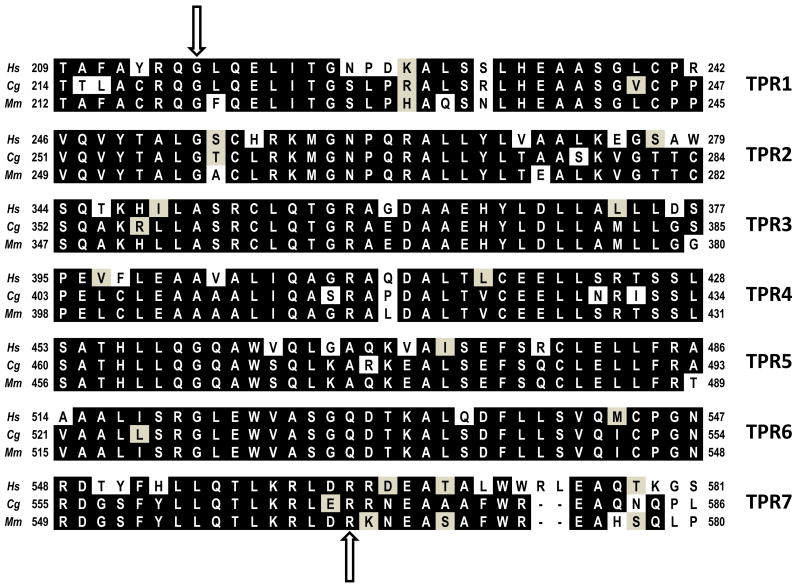Fig. 1.
The tetratricopeptide (TPR) repeat motifs of FANCG/XRCC9. Sequences are shown for human (Homo sapiens), Chinese hamster (Cricetulus griseus) and mouse (Mus musculus), with identical residues shown in black and similar residues shaded in grey. The upper arrow indicates the position of the conserved 8th residue (glycine or alanine) that was changed to glutamine to create the following mutant FANCG proteins: TPR1 (G216Q), TPR2 (G253Q), TPR4 (A401Q), TPR5 (G460Q) and TPR6 (G521Q). As the 8th residue of TPR7 is neither Gly nor Ala, this motif was mutated at another residue that is highly conserved. The lower arrow indicates the position of the arginine (R) residue that is mutated to glutamic acid (E) in TPR7 (R563E).

